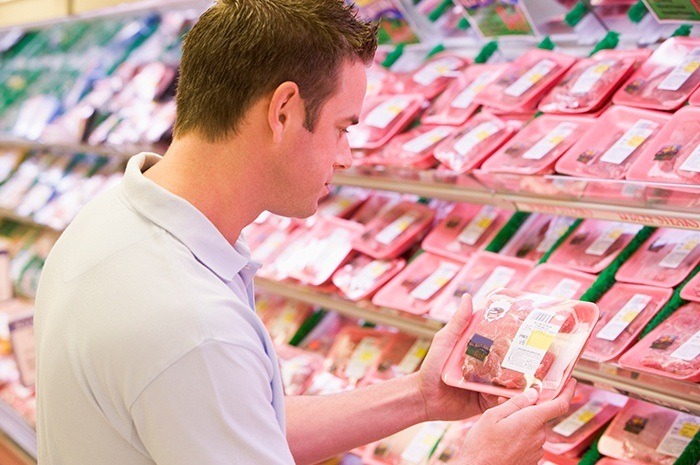How Meat And Poultry Labels Mislead — And Sometimes Deceive — Consumers
When Consumer Reports released a survey in May revealing that an astounding 73 percent of consumers are misled by the term "natural" on food labels, the discussion around deceptive labeling terms returned to the spotlight. While much of the conversation centers around packaged goods, meat-eating Americans
regularly face the same issues in the meat section of every supermarket across the country.
As consumers strive to put the best meat possible on their plates, they rely on the information included on product labels to better understand how an animal is raised, processed, and packaged. Unfortunately, most labels are deceiving, displaying terms that are unclear, loosely defined, or essentially meaningless. Though consumers want information about their food, transparency is not a natural ingredient for many brands.
When it comes to meat, the term "natural" applies only to the way the product was processed and has no bearing on how the animal was raised on the farm. This term, along with many others, is commonly placed on packaging to capture the attention of consumers. The end result of using these buzzwords is that consumers' perception of what took place on the farm can be vastly different from reality.
As for chicken — America's most popular meat — labeling terms like "hormone-free" and "cage-free" are actually meaningless. No chicken treated with hormones can be sold legally in the U.S. in the first place, and chickens raised for consumption are kept in coops, not cages.
Even though chickens are not kept in cages, marketers see value in putting the term "cage free" on product packaging because it elicits a mental image of chickens roaming freely on a field, which is actually not the case. If you are seeking a chicken that truly had adequate space to roam, then you should be looking for the term "free-range" instead of "cage-free."
Other popular buzzwords that are appearing left and right in the meat section of the grocery store are "grass-fed," "humanely raised," local," and "small family farm." None of these terms are currently defined by the USDA and are used by brands to reel in health-conscious consumers at the point of purchase.
While consumers who are concerned about farm animal welfare may pay a premium for "humanely raised" meat products, they should be wary of the term "humane," which is loosely defined. Farmers and food companies practice humane animal care in different ways, depending on their knowledge and beliefs about animals. Farming practices are also not consistent and vary from farm to farm. Therefore, labels claiming "humane" treatment may signify that the farming practices are only slightly better than conventional factory farming practices.
Because the term "humane" has no official backing, an intermediary step is to look for credible and independent third-party validators that provide certifications such as "Certified Humane." These certifications validate that the farm animals were given access to adequate space and nutritious food.
If consumers want to cut through the marketing fat on labels, they must educate themselves about meat-labeling fact and fiction and choose brands that live up to the standards they value most. They can also push for action by contacting government officials to voice concerns and advocate for stricter regulations, more consistency, and clearer definitions of common labeling terms.
